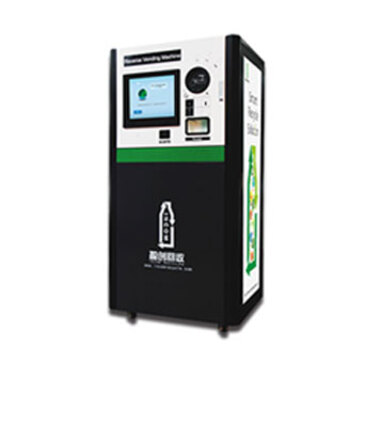Now, more and more people are joining the garbage sorting operation! But is the trash you throw out correct? Today, the intelligent beverage bottle recycling machine supplier will tell you about the misunderstandings in the garbage classification.
Misunderstanding 1: Toilet paper is also paper and can be recycled
The recyclable waste paper mainly includes newspapers, periodicals, books, various kinds of packaging paper, etc. (except for heavily polluted paper). In general perception, toilet paper is paper and is recyclable. But in fact, toilet paper dissolves in water and is not considered recyclable "paper". Similarly, used napkins, kitchen paper, etc., all belong to "other garbage".
Misunderstanding 2: Dried diapers are other garbage, and wet ones are kitchen waste
Whether the diaper is wet or not, the diaper is other garbage! Because other garbage and kitchen waste are not distinguished according to the water content, kitchen waste refers to perishable biomass waste generated in daily life, and other garbage refers to other than hazardous waste, recyclables, kitchen waste Other waste. Similarly, napkins, wet tissues, toilet paper, etc., these large-area contaminated paper should be thrown into other waste sorting bins.
Misunderstanding 3: Big fish and meat are leftover after eating, which belongs to non-recyclable garbage
In fact, big bones are included in "other garbage" because of "difficult to corrode" and "hard texture not easy to crush and easy to damage kitchen waste end treatment equipment", similar to durian shells, coconut shells, etc., but chicken bones and fish Bone, corn on the cob, apple core, etc. are relatively soft and "prone to corrosion", which belongs to "food waste".
Misunderstanding 4: After bagging food waste, directly throw it into the trash
The commonly used plastic bags, even if they are degradable, are far more difficult to corrode than food waste. In addition, plastic bags filled with food waste are stained with various stains, so the correct approach is to first break the bag, pour the food waste into the "food waste" bucket, and then throw the bag into the "other garbage" bucket.

Misunderstanding 5: Drinks are not finished, plastic beverage bottles are directly put into recyclable trash cans
The remaining liquid in the plastic beverage bottle belongs to pure liquid food waste. The liquid should be poured directly into the drain, then the plastic beverage bottle should be rinsed and flattened, and then put into the "recyclable" trash can. This can not only reduce the workload of sanitation workers but also compress the volume of plastic bottles for easy transportation. Similarly, Cola-filled cans, Tetra Pak packaging for milk, etc. need to be cleaned before being used as recyclables.
Misunderstanding 6: Expired food is thrown into the non-recyclable trash bin with packaging
Expired foods, such as a pack of melon seeds that have expired in moisture, are thrown into the trash together with the packaging? This is obviously inappropriate! Because the seeds are easy to rot and belong to kitchen waste; and the packaging (such as plastic packaging bags), which has been filled with these expired foods, has been contaminated, then it should be thrown into other garbage sorting bins.
Misunderstanding 7: Don’ t take the broken glass bottles, throw them into non-recyclable trash cans
In fact, glass bottles are "recyclable", but because of their large size, heavyweight, and low recycling profit, even the broken ones are rejected! If we don't accept the broken ones, can we just throw them into "non-recyclable" buckets? Do not! The correct way is to put it into the recyclables collection container set in the common area of the community.
Our company provides recycle can reverse vending machines.
Previous: None.
Next: FRP Spray Pipe
Copyright:@2020-2021
Comments Please sign in or sign up to post.
0
0 of 500 characters used